Best Equipment for Baking Sourdough Bread 2025 [All Tried & Tested Products with Photos]
This post may contain affiliate links.
If you're looking for the best equipment for baking sourdough bread then you're in the right place. These are actual products that I use every day, in my own kitchen, every time I bake delicious sourdough bread. These sourdough bread tools are tried and tested by me across thousands of loaves of sourdough bread and sourdough recipes.
Of course sourdough baking is possible with very limited tools if you're on a budget or a beginner (check out my guide to baking sourdough on a budget), but having some specific baking tools can really help you on your sourdough journey.
The right sourdough baking tools can increase your chances of better oven spring, a crispy crust and more consistent results overall. You can also peak inside The Pantry Mama test kitchen to see the ingredients I use when developing sourdough recipes.
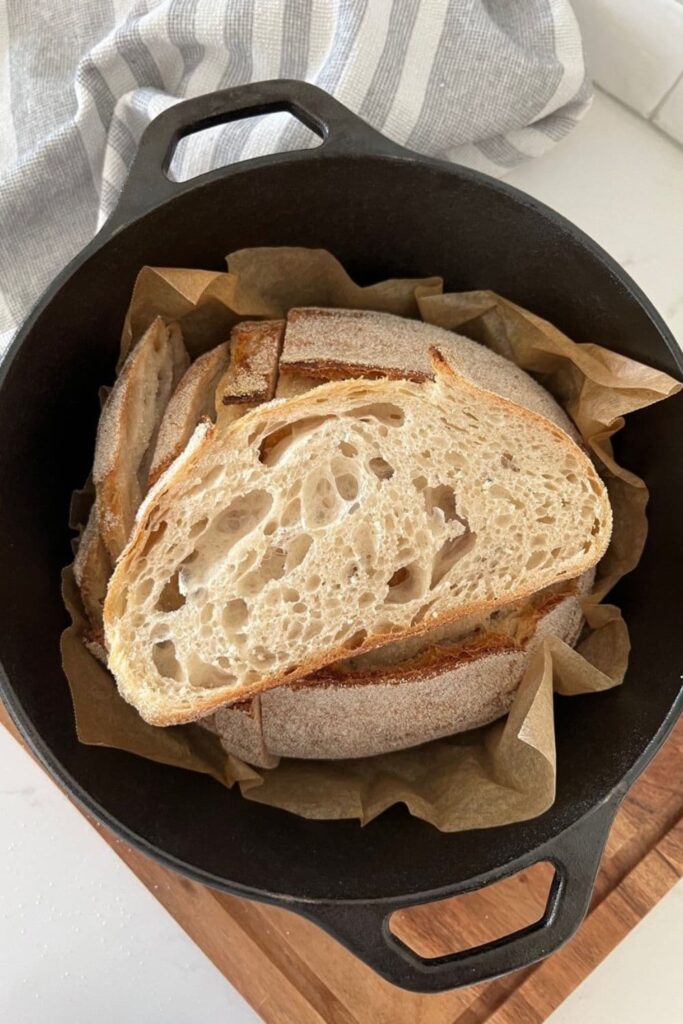
Remember, the most important thing you'll need to make the best sourdough bread is your own sourdough starter. If you haven’t made a starter yet, you’ll find everything you need in my post on how to make a sourdough starter. You might also want to read about how to buy a sourdough starter.
If you're in a hurry, this is the equipment I recommend for baking sourdough bread, including my favorite tools:
- Kitchen Scale (essential)
- Glass Jar for Sourdough Starter
- Jar Spatula
- Bowl Scraper
- Dough or Bench Scraper (Bench Knife)
- Cambro Containers
- Elastic Food Covers (Shower Caps)
- Banneton Basket or Proofing Basket
- Brod & Taylor Proofer
- Parchment Paper (buy the best you can afford)
- Bread Lame (Razor Blade)
- High Heat Oven Gloves
- Lodge Dutch Oven
- Serrated Bread Knife
You might not want to buy everything straight away, but having just a few of these can really help move your sourdough baking forward. I've added more details on each piece of equipment in the post below, as well as added a few other things that you might like to buy as your journey goes on.
Best Equipment for Baking Sourdough Bread
Kitchen Scale
A scale is probably one of the most important pieces of equipment you can buy for your sourdough journey. It ensures that you're measuring your ingredients accurately and giving your sourdough starter the right amounts of flour and water (and most importantly never starving it).
I use the KD-8000 scale - you can purchase it from Amazon here. I love how easy it is to use, it's accuracy ... and the fact that it doesn't turn off half way through a recipe (how frustrating is that). It never skips a beat!
I also love that it is both battery powered and can be plugged in at the wall. I prefer running it on batteries so I can use it anywhere, rather than being tied to a power outlet.
You can read more about the best baking scale for sourdough bread, as well as why weighing your ingredients is so important in sourdough bread.
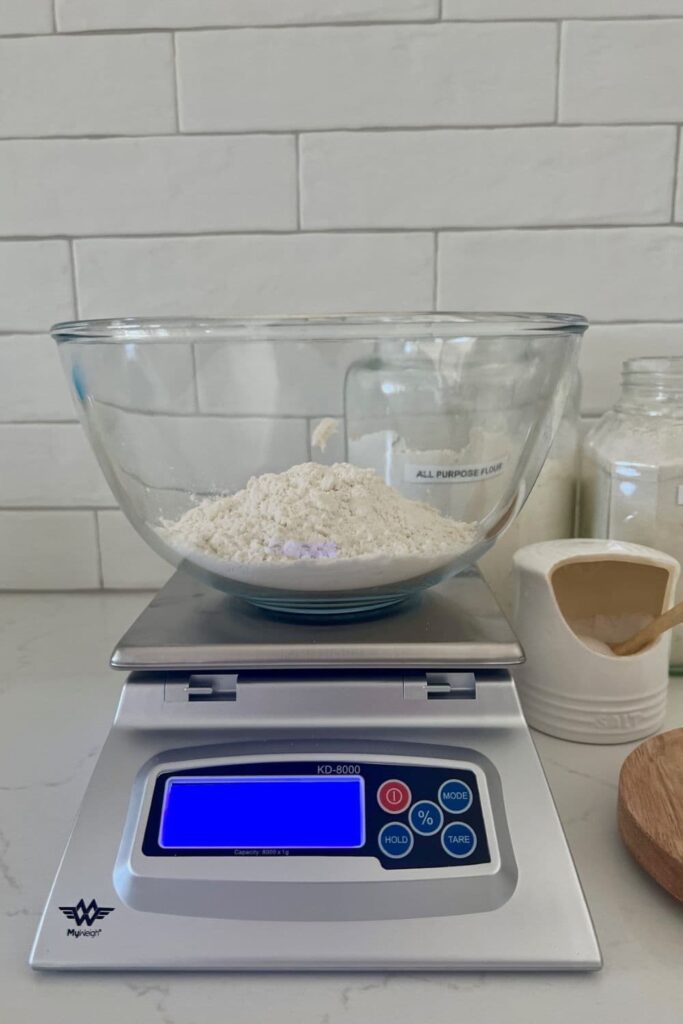
Glass Jar for Sourdough Starter
The best jar for sourdough starter is a glass jar with a wide mouth. I use a a 16oz/490ml Ball Jar. I also love using a plastic lid, rather than a metal lid as they don't rust. I use these plastic lids without the seal in. I've written about the best jar for sourdough starter in loads of detail.
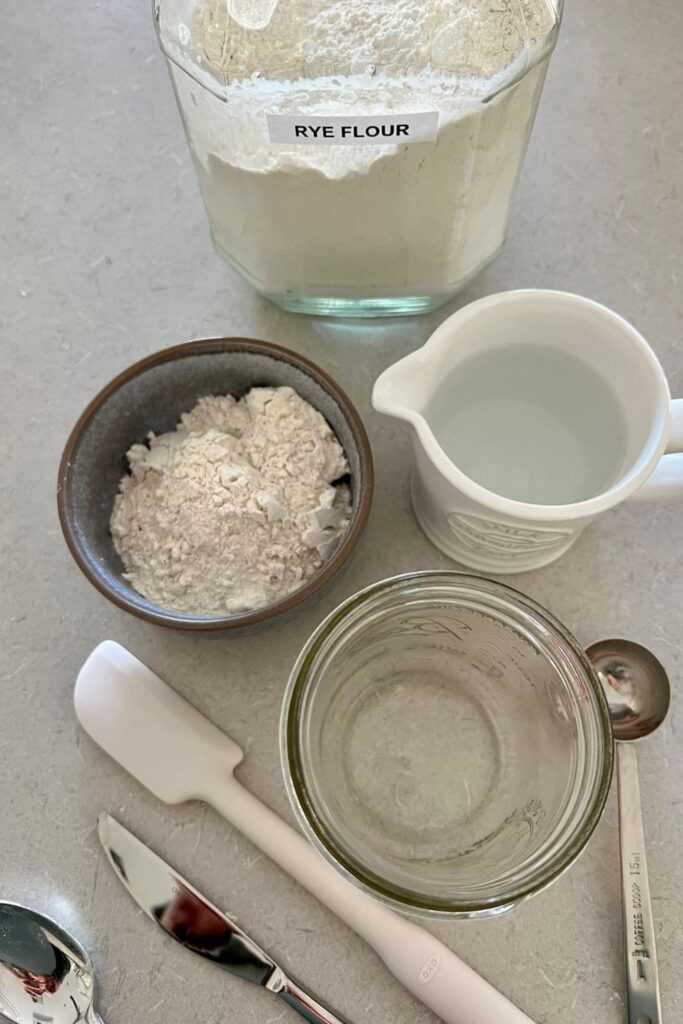
Jar Spatula
Now this might seem like a funny thing to recommend, but since I bought a few of these Oxo Jar Spatulas, I have used them for so many things - not just sourdough - but all sorts of little jobs in the kitchen.
They are amazing for mixing the dough (I actually like them better than a Danish Dough Whisk). They're also great for mixing sourdough starter, sourdough chocolate brownies and even sourdough bread in the beginning stages.
And they're so easy to clean which is really important when it comes to sourdough and the sticky messes that it sometimes creates (see my sourdough cleaning tips)! They love the dishwasher too (just like me really).
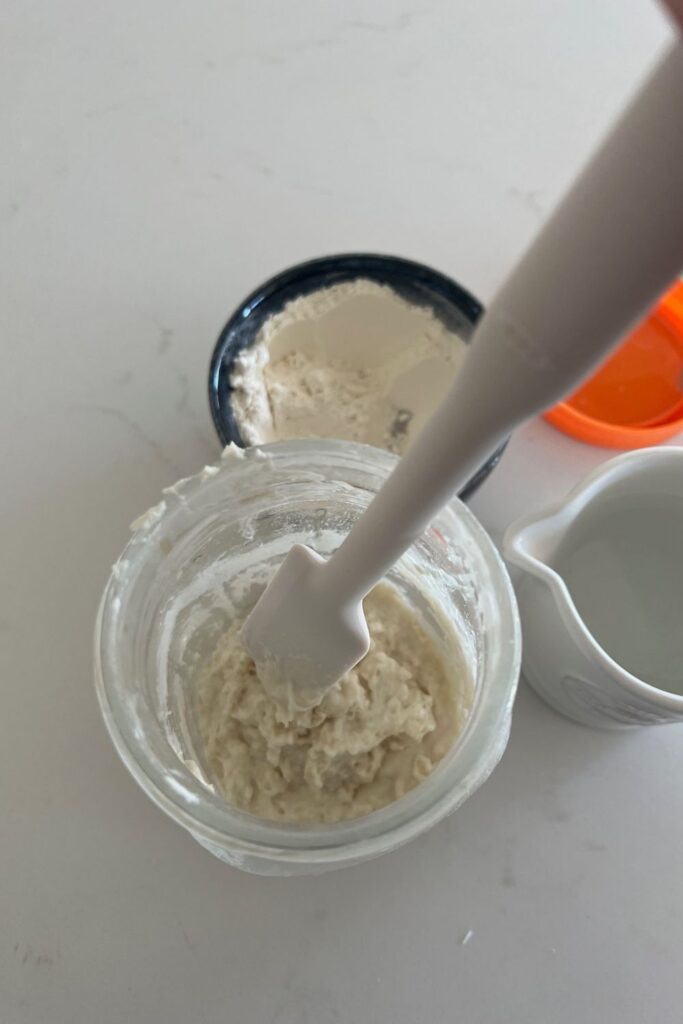
Dough Scraper / Bench Knife
This is another one of those little must haves that won't break the bank. It's super handy for easing sticky dough out of the bowl without tearing it. You can get silicone versions or flexible plastic scrapers. Over the last few years, I've moved from using a silicone scraper to a plastic scraper as I find it more flexible and eases the dough out of the bowl more easily.
You can see my green plastic dough scraper in the photo below (and you can buy a similar one here).
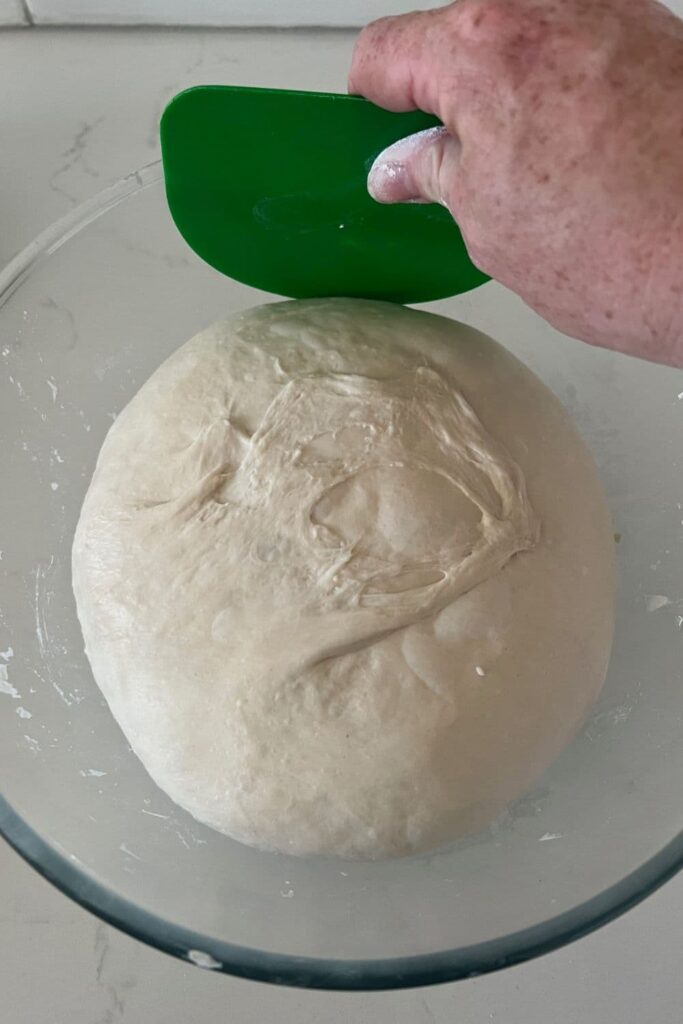
A dough scraper is also really handy - however, I don't use this to shape the dough at all, I much prefer using my hands! I use this metal dough scraper for cutting dough into equal size portions (like when I make sourdough hot dog rolls or sourdough hamburger buns) and also for cleaning any dried on mess on the my counter tops.
You can buy a metal dough scraper here.
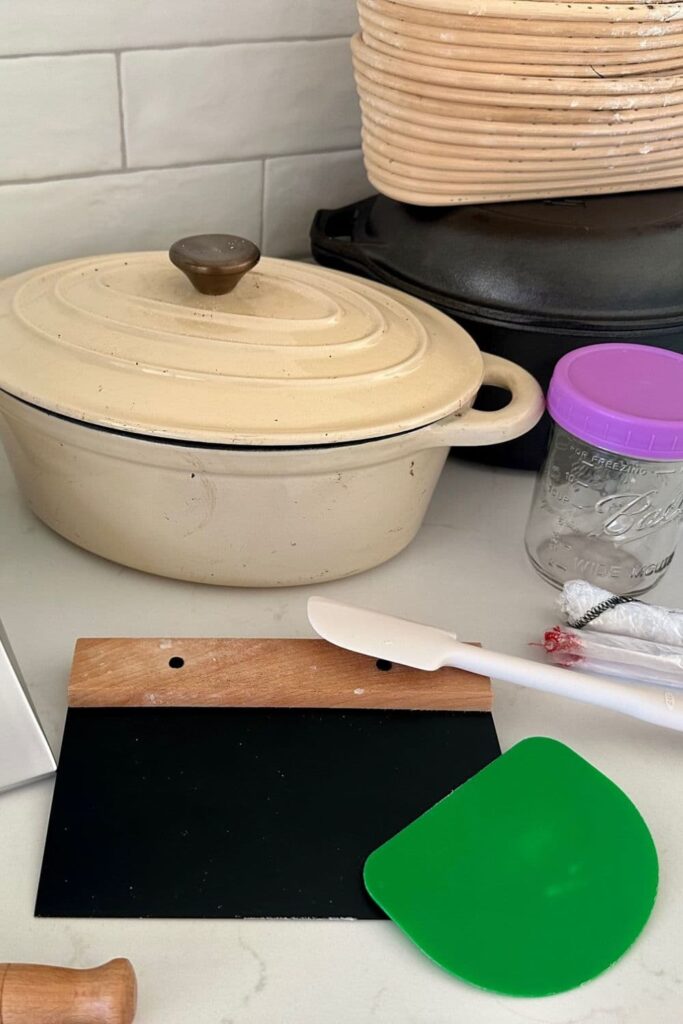
Cambro Containers
Cambro containers are a really easy way to see when your dough is doubling during bulk fermentation. I've written a whole post about how to use cambro containers for sourdough baking.
Cambro containers are also a handy piece of sourdough baking equipment if you're making a few different doughs - they stack easily to save space and are also useful for storing other foods in your kitchen, so can be a versatile investment for sourdough bread baking.
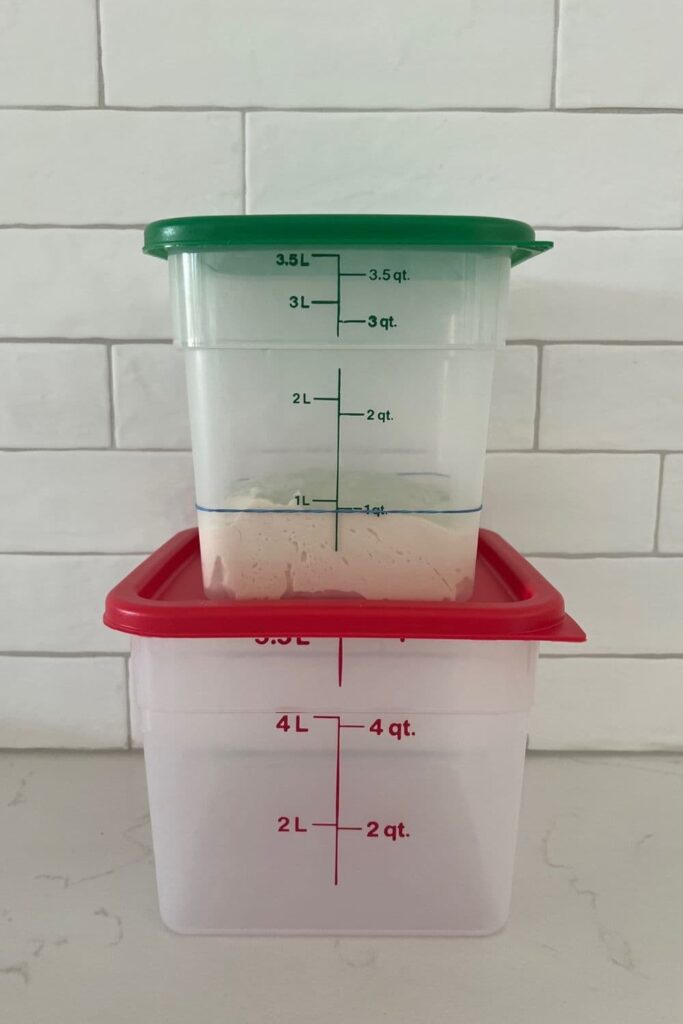
Glass Bowls
I've had a lot of people ask about the glass bowls I use to mix my sourdough. These are classic glass Pyrex mixing bowls (3L). I usually just purchase them from the supermarket when they are on sale. I love these bowls and use them to mix up single batches my simple sourdough recipe.
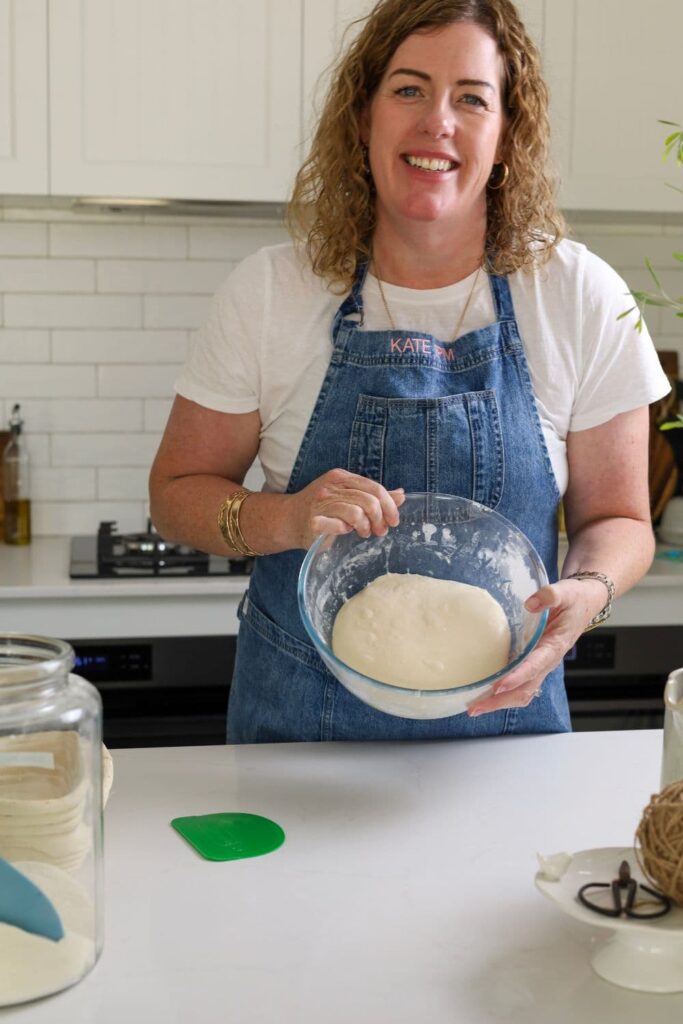
Elastic Food Covers (Shower Caps)
Just like the jar spatula, an elastic food cover might seem insignificant, but these little gems save me so much time (and waste). I use these to cover sourdough while it's in bulk fermentation, in the banneton in cold fermentation and also for covering dough that's resting on the counter before shaping (like sourdough pizza dough).
I find that I reuse the same elastic food cover over and over. If it gets sticky dough on it, I just hang it outside and allow the dough to dry and then the dried dough just peels off and I can keep on using it.
You can purchase a pack of elastic food covers here.
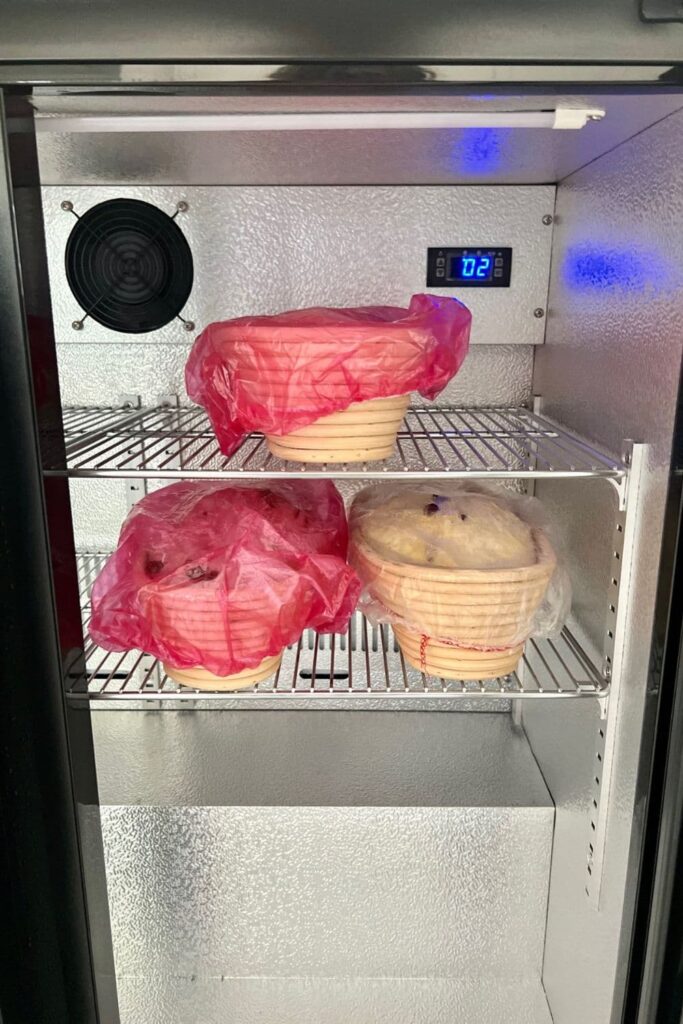
Banneton Basket or Proofing Basket
When talking about the best equipment for baking sourdough bread, it is absolutely necessary to mention bannetons. I own a lot of different sizes and shapes, which I use to make various loaves.
You can definitely use alternatives to banneton baskets, however, they are definitely purpose built and will give you the best shape to your dough. You can see from the photo below that my bannetons are very well used and "seasoned". Something I should mention is that I never use a liner inside my bannetons.
The banneton you need and use will depend on the size of Dutch Oven you're using, as well as the weight of the dough you're wanting to support. You can read my guide to buying the right sized banneton for sourdough and if you're wanting to know how to look after your bannetons, check out this guide to banneton prep, care and maintenance.
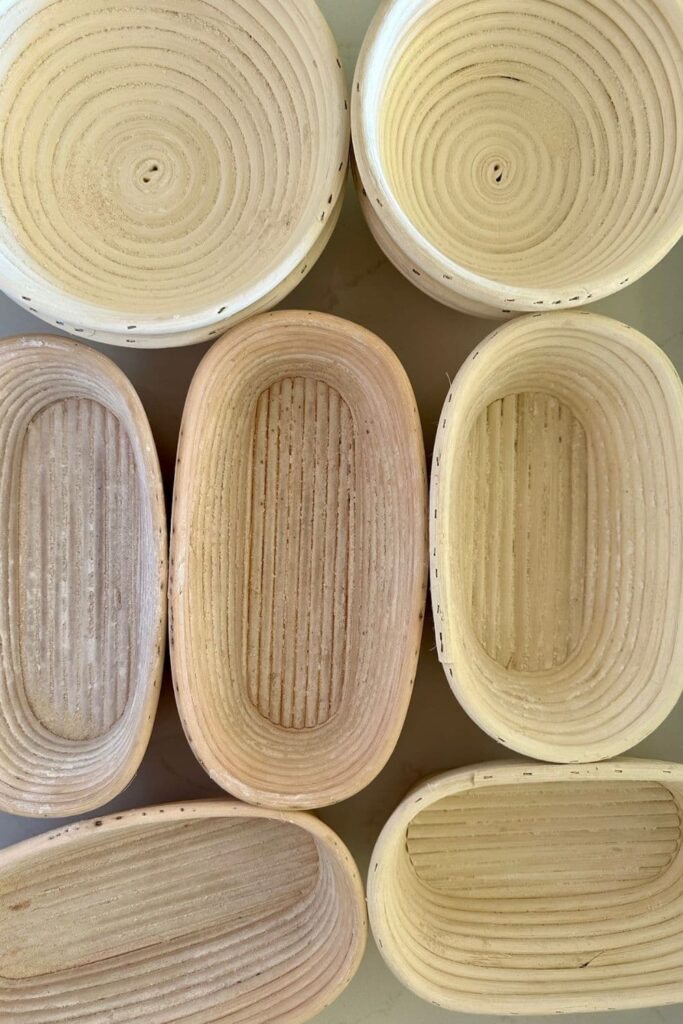
Brod & Taylor Proofer
While this bread proofer is not considered an essential sourdough baking tool, it is extremely helpful in making sure that bulk fermentation occurs in a timely matter. I invested in this bread proofer around 6 months ago and it's become a really useful part of my sourdough baking toolkit.
It's really handy to keep your sourdough starter warm in (mine absolutely loves it) and also if you're wanting to proof bread dough at a consistent temperature. Perhaps the only thing I don't like about it is that it's quite small so I can't use my glass bowls in there as I can only fit one at a time (this is where the Cambro Containers can be handy).
I highly recommend this Brod & Taylor Bread Proofer if you are having trouble with your bulk fermentation and or you're cooking sourdough in a cold climate. You can purchase the Brod and Taylor Bread Proofer here.
Alternatively, you could use your oven - I've added notes about how I use my oven for proofing in this article taking a peak inside The Pantry Mama test kitchen.
Parchment Paper
I don't recommend a specific brand of parchment paper however I will say buy the "better" brands because they will perform better at a higher heat. I find cheap, no name paper tends to burn and crumble at high heat, whereas the more expensive stuff tends to stand up to it. Some parchment papers can even be used a few times before you have to dispose of them.
You could also use a silicone sling as an alternative to parchment paper, however I prefer to use the paper as I find it much easier for my baking needs.
Parchment paper ensures my dough doesn't stick to the bottom of the Dutch Oven, but it also helps me transfer my sourdough into a hot Dutch Oven with no dramas.
Bread Lame or Razor Blades
A bread lame is a fancy razor blade used to score sourdough bread. If I'm doing more intricate scoring, I simply use a razor blade that I hold in my fingers. This is not for everyone, but it works for me. If you prefer a razor with a handle, you can purchase something like this.
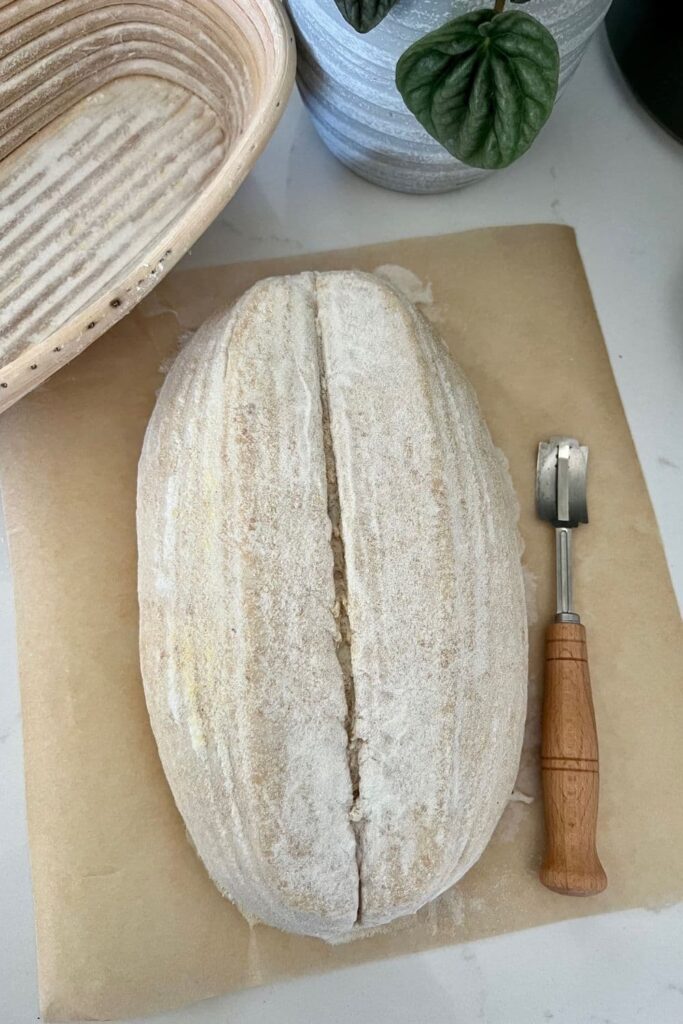
High Heat Oven Safe Gloves
A pair of high heat oven safe gloves are really handy. For a long time, I used dish towels and tea towels to lift my Dutch Ovens in and out of the oven, but since swapping to actual gloves, I don't think I could go back! They are literally an essential tool in my kitchen now!
I use these gloves every single day, for so many other cooking applications (I even use them for our smoker and wood fired oven) and they are awesome! You can purchase high heat oven gloves here.
Dutch Ovens
I have always used a Dutch Oven to bake sourdough bread, and even after testing many open baking scenarios, I still prefer baking sourdough bread in a Dutch Oven.
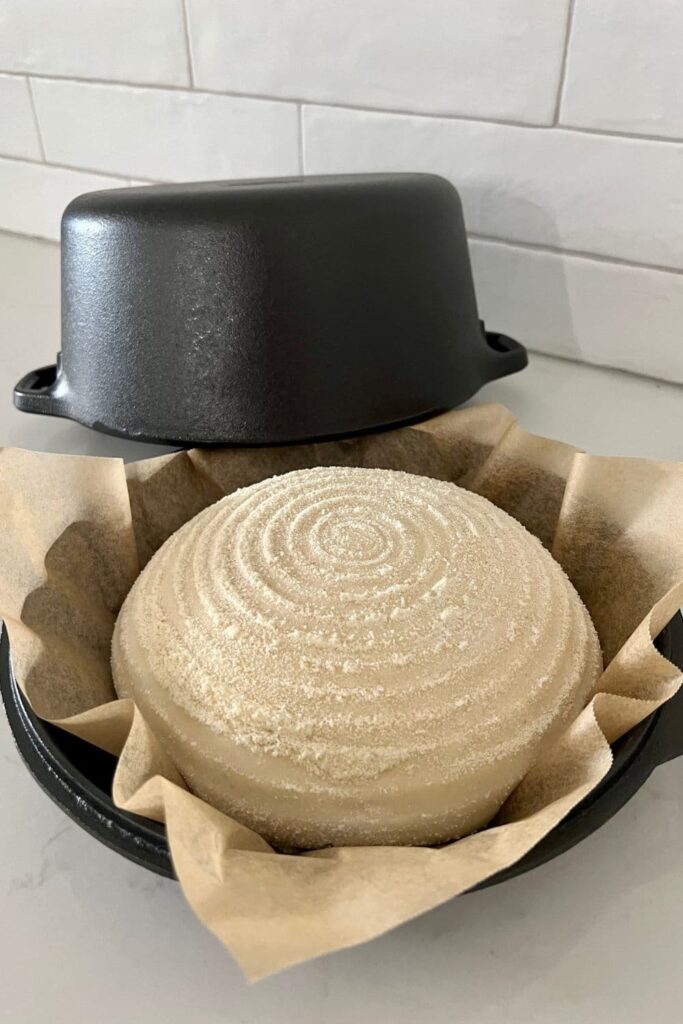
I specifically use a round and oval Dutch Oven, but I also have a cast iron bread baking pan with a lid which can be useful too. The specific sized Dutch Ovens I use and recommend are:
- Round Enamel Dutch Oven (5Q or 5L)
- Oval Enamel Dutch Oven (5Q or 5L)
- Lodge Double Dutch Oven
- Cast Iron Bread Pan
I have written a guide to the best Dutch Oven for Sourdough Bread, which goes through each size Dutch Oven in more detail.
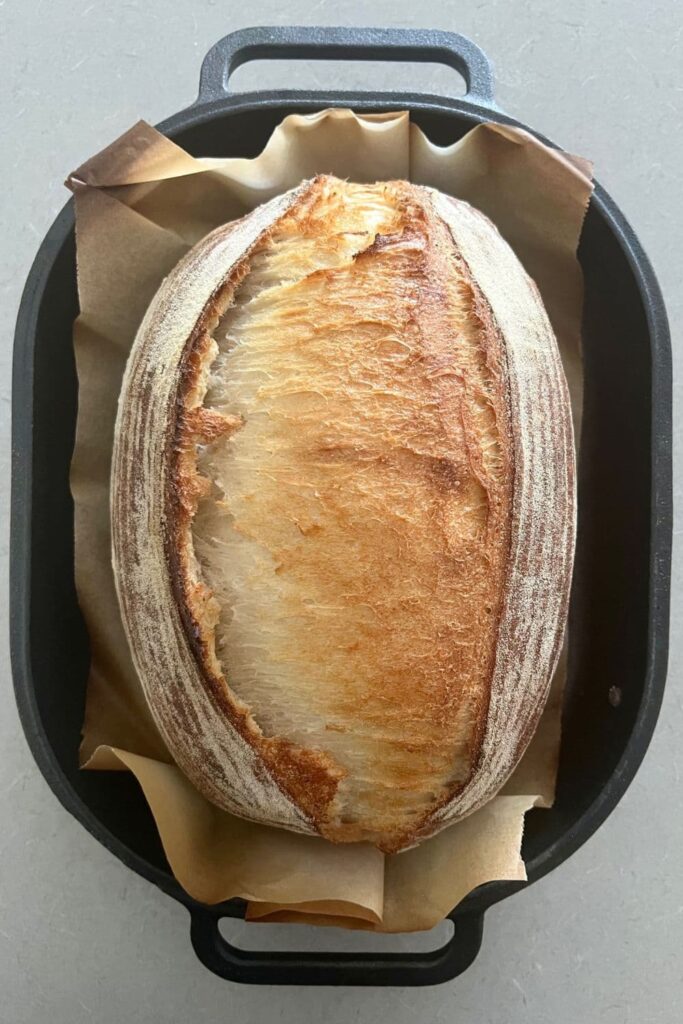
Serrated Bread Knife
While a bread knife isn't essential for baking sourdough bread, a good bread knife certainly makes it easier to slice. I have used this Mercer 10" knife for quite a while now. You can read my review on the best bread knife for sourdough.
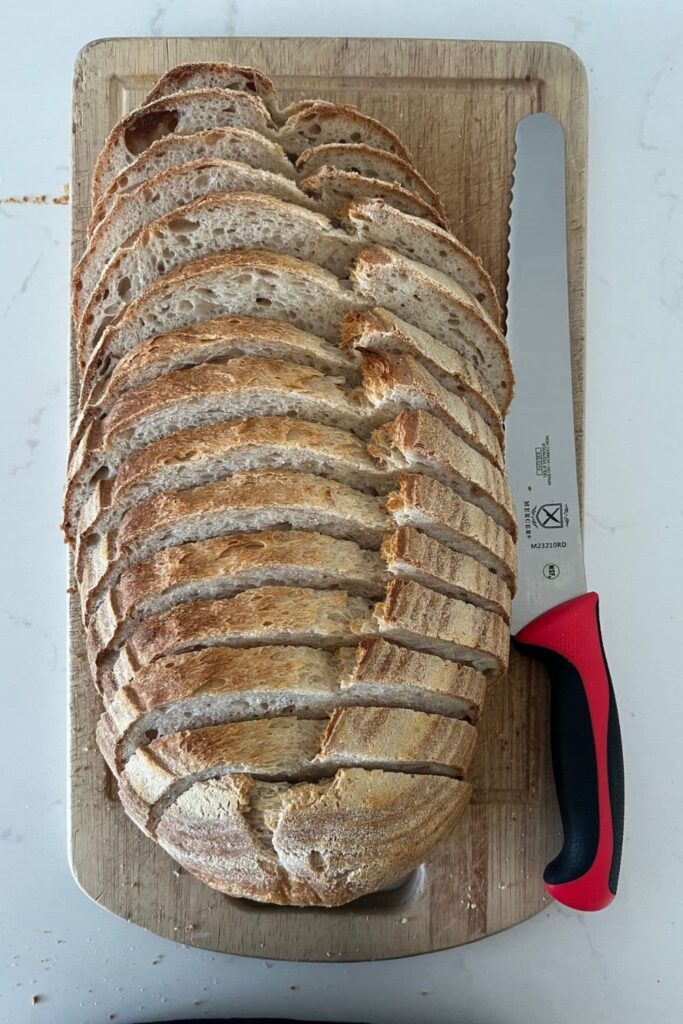
Equipment I Don't Use For Sourdough Baking
Now you may have noticed that I haven't included a Danish Dough Whisk or an instant-read thermometer in my list of the sourdough baking equipment that I use.
I do recognise that these tools are very handy for some people but I don't use them in my sourdough bread baking routine (although I do have a dough whisk in my draw and have tested it extensively across lots of applications). In fact, you might notice a Dough Whisk in some of my recipe photos, as I did use it a lot before discovering this Jar Spatula!
You can read about why I don't use an internal thermometer to check whether my sourdough loaves are done.
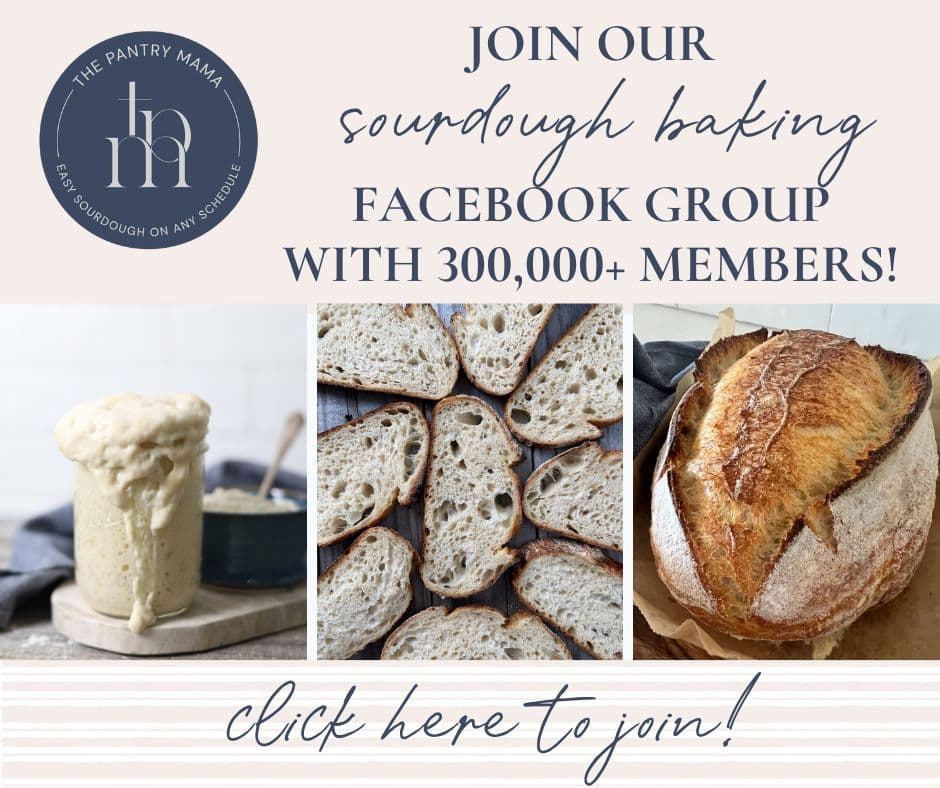
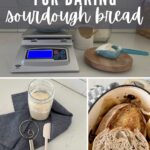
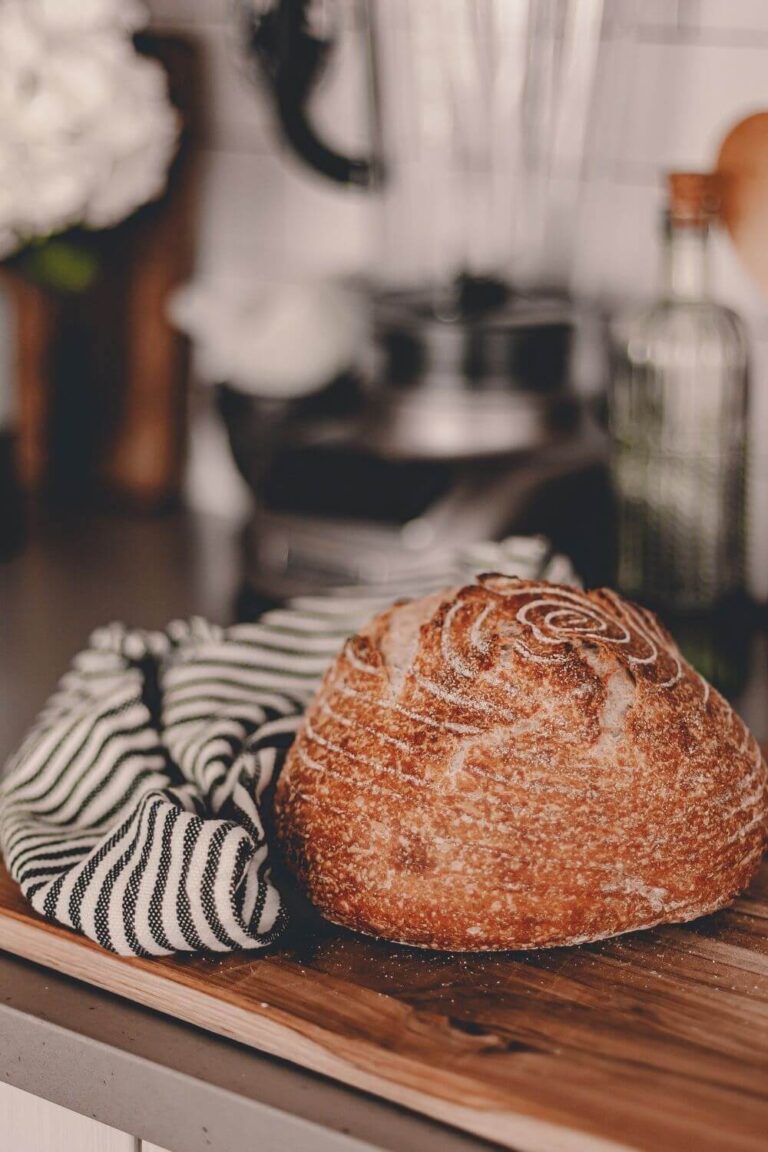
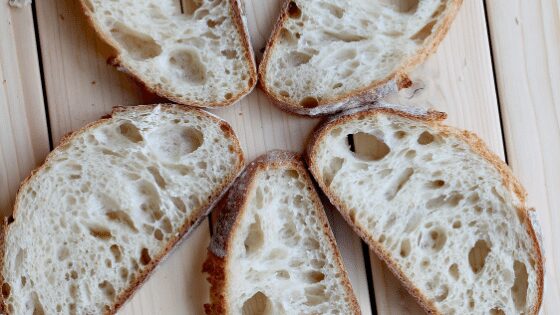
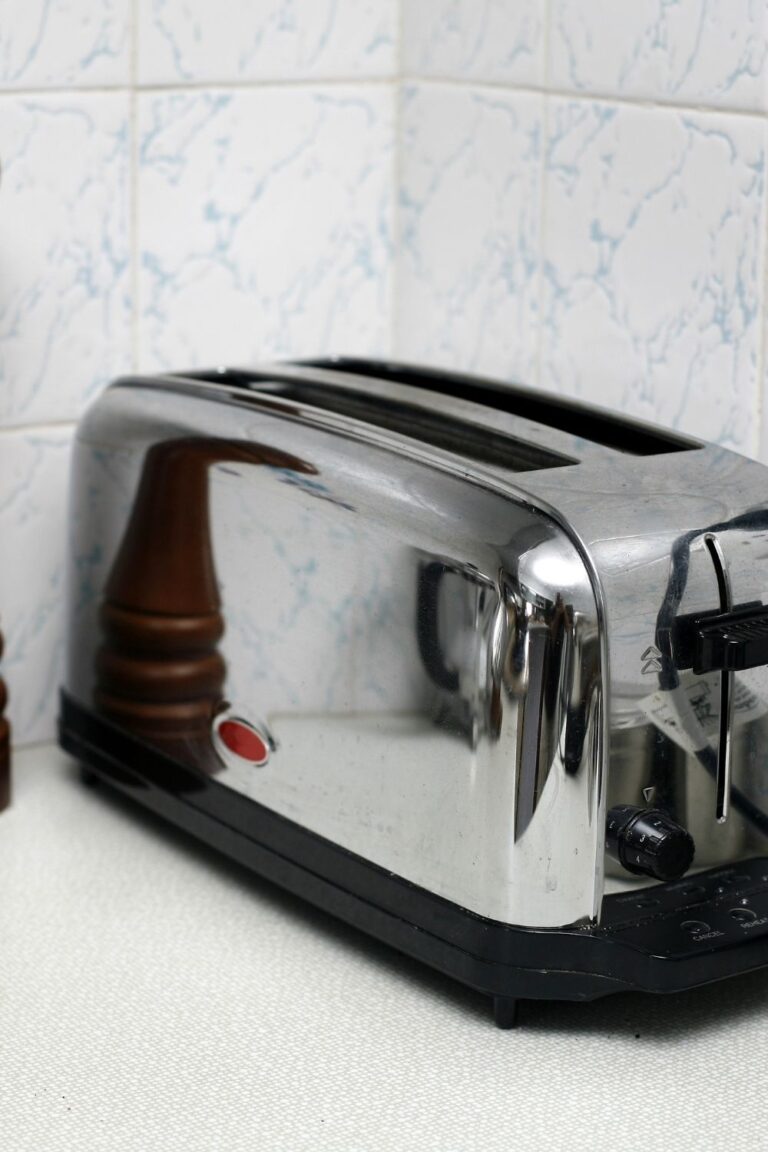
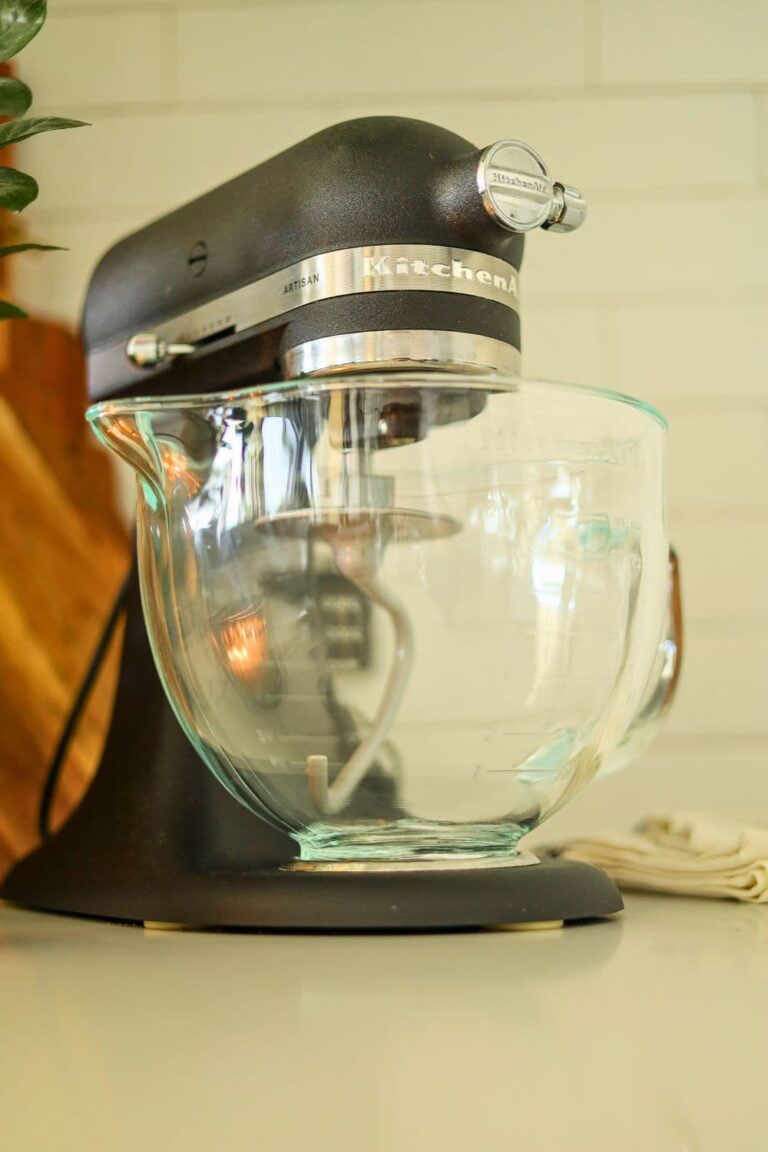

Can I use my food processor with the dough hook attachment in replacement of a stand mixer?
What is the tea strainer in the picture for?
I use this to sprinkle flour over my loaves before baking if I want to add a design. It ensures the flour is dusted over evenly. It's also handy to dust cocoa and icing sugar after baking sweet treats too.
hi
im trying to bake mini sourdough rolls i have 5 inch baskets
any ideas on how to bake?
if dutch oven what size?
and also the oven temp?
Thanks!!!
your website super easy and helpful!
Do you have a link for your glass mixing bowls?
Thank you for all your posts which I do so appreciate and which have taught me a lot about the art of sourdough baking. I notice you use plastic containers for rising your dough. I am rather averse to the use of any plastic in my kitchen especially after reading about how many plastic particles are found in bottles of water! I worry about the acid in the sourdough nibbling away at the plastic! You don’t happen to know any manufacturers who make glass square containers which I could use? At present I use glass bowls but as they are rounded, I find it rather hard to judge how much my dough has risen. It is all rather a hit and miss affair in my kitchen.
Hi,
Always find your videos informative, learn so much from visuals.
In one video you have five finger oven gloves, would be interested in knowing where to purchase them.
Jennifer Baldwin.
Hi Jennifer - you can find these gloves in this post - Best Equipment for Baking Sourdough Bread 2025 [All Tried & Tested Products with Photos] They sure are handy! I use them all the time 🙂